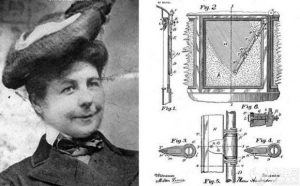

Early History of Windshield Wipers
In the earliest parts of the 20th Century, an Alabama woman’s trip to New York City during cold, stormy weather led to a crucial invention that the vast majority of car owners take for granted today. It’s fascinating how an everyday inconvenience sparked the creation of the windshield wiper. Observing the discomfort and riskiness of the driver who had to stick his head out to see through the windshield due to the poor visibility caused by the wintry conditions, Mary Anderson’s innovative mind began to churn. At that moment, the idea for a windshield wiper that could be operated from within the vehicle was born.
Over several months, Anderson developed her concept into a working prototype: a set of removable wiper arms made from wood and rubber, connected to a lever installed near the steering wheel. Pulling the lever initiated a spring mechanism that moved the wiper arms across the windshield, efficiently clearing away snow, rain, and debris. Mary Anderson’s innovative solution, patented in 1903, called the “Window-Cleaning Device”, revolutionized driver visibility during harsh weather conditions.

Despite the ingenious nature of her invention, Anderson faced skepticism and a lack of support. Some doubted the practicality of her wiper, arguing it might distract drivers. Unfortunately, she never profited from her patent; the burgeoning growth of automobile technologies didn’t fully embrace windshield wipers until after her patent expired. Nevertheless, Mary Anderson’s pioneering work laid the groundwork for the evolution of windshield wipers. Her simple yet groundbreaking solution to a common problem became the cornerstone of the crucial safety feature we now often take for granted.
Interestingly, the first automatic windshield wiper, patented in 1917 by Charlotte Bridgewood, utilized an electrically powered system with rollers instead of blades, but it didn’t gain commercial success. The pivotal shift toward modern windshield wipers happened with the Folberth brothers’ introduction of blade-based automatic wipers using a vacuum-powered wiper motor. John R. Oishei’s creation in 1920 further refined this technology, implementing a spring-pressured arm for consistent wiping force.
The evolution continued with Robert Kearns’ intermittent wiper system in 1953. Robert Kearns’ experience with a champagne cork accident at a wedding that nearly blinded him in one eye was a pivotal moment. The incident made him consider the idea of a windshield wiper system that mimicked the human eye’s natural blinking action. Kearns was inspired to create a wiper system that would intermittently clear the windshield, similar to the way a human blinks to keep the eye clear and moist. This personal experience drove Kearns to innovate and develop his intermittent windshield wiper system, aiming to enhance driver safety and visibility while driving in varying weather conditions. Kearns’ motorized wiper system gained wide adoption, revolutionizing wiper technology in the automotive industry.
Evolution to Modern Windshield Wipers
Today’s windshield wiper technology encompasses various advancements. For example, McLaren Automotive is exploring ultrasonic force fields to eliminate wiper blades. Recent patents focus on reducing noise and vibration while enhancing wiper efficiency, such as those from Trico, Faidek Corporation, and Bosch.
Modern Advancements Include:
- Traditional Wipers: These are the standard wipers in most vehicles, offering various blade materials and designs for improved wiping efficiency.
- Rain-Sensing Wipers: Equipped with sensors, these wipers automatically adjust their speed according to the intensity of rainfall, providing convenience to drivers.
- Heated Wiper Blades: Designed to prevent snow and ice buildup, these blades ensure clearer visibility in colder climates.
- Aero Flat Blades: These advanced designs conform to the windshield’s curvature, providing a more uniform wipe and reducing wind noise.
- Silicone Wiper Blades: Offering enhanced durability and smoother wiping due to their silicone composition, these blades last longer than traditional rubber ones.
- Hybrid Wiper Blades: Combining the advantages of both traditional rubber and silicone blades, hybrids aim to provide superior performance and durability.
Windshield wiper technology continues to evolve, focusing on improving efficiency, reducing noise, and enhancing safety for drivers. Through ongoing research and innovation, the quest for the perfect wiper system continues, ensuring better visibility and safer driving experiences for all.
Sources:
Images:
